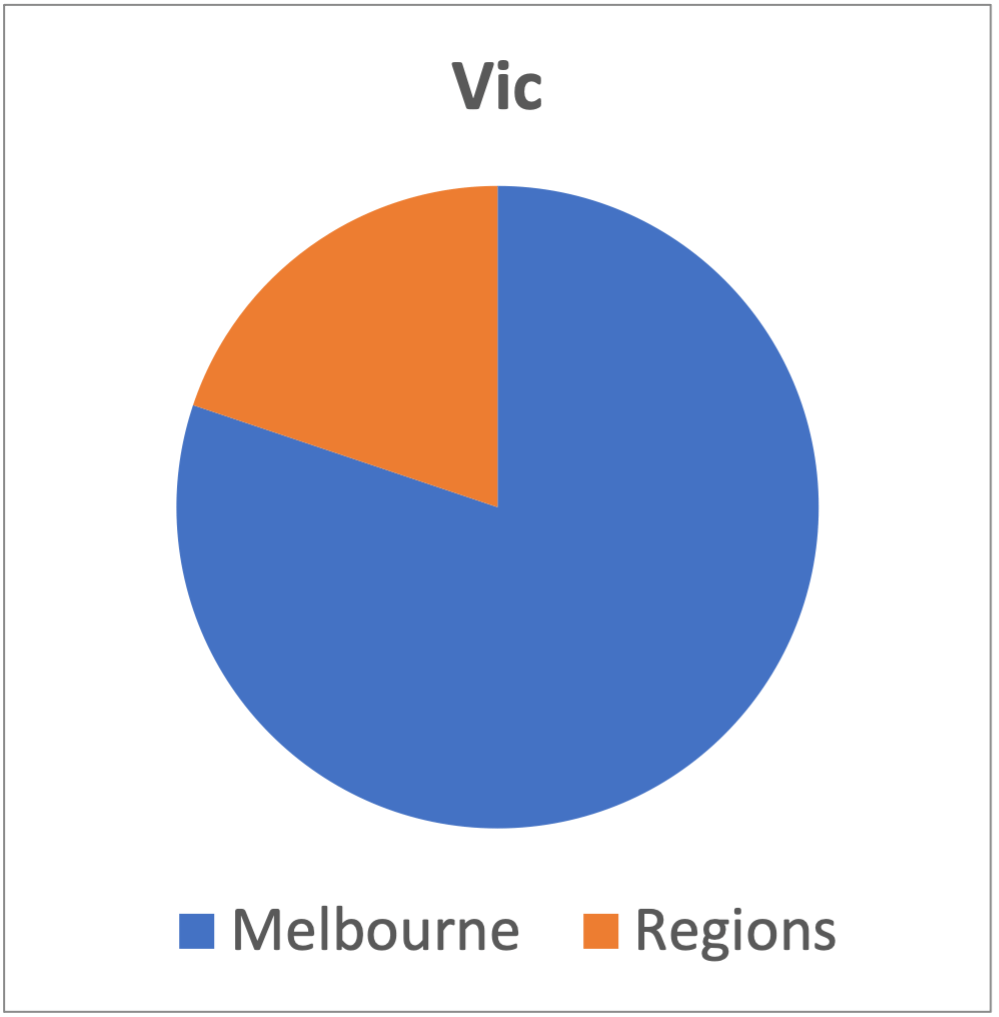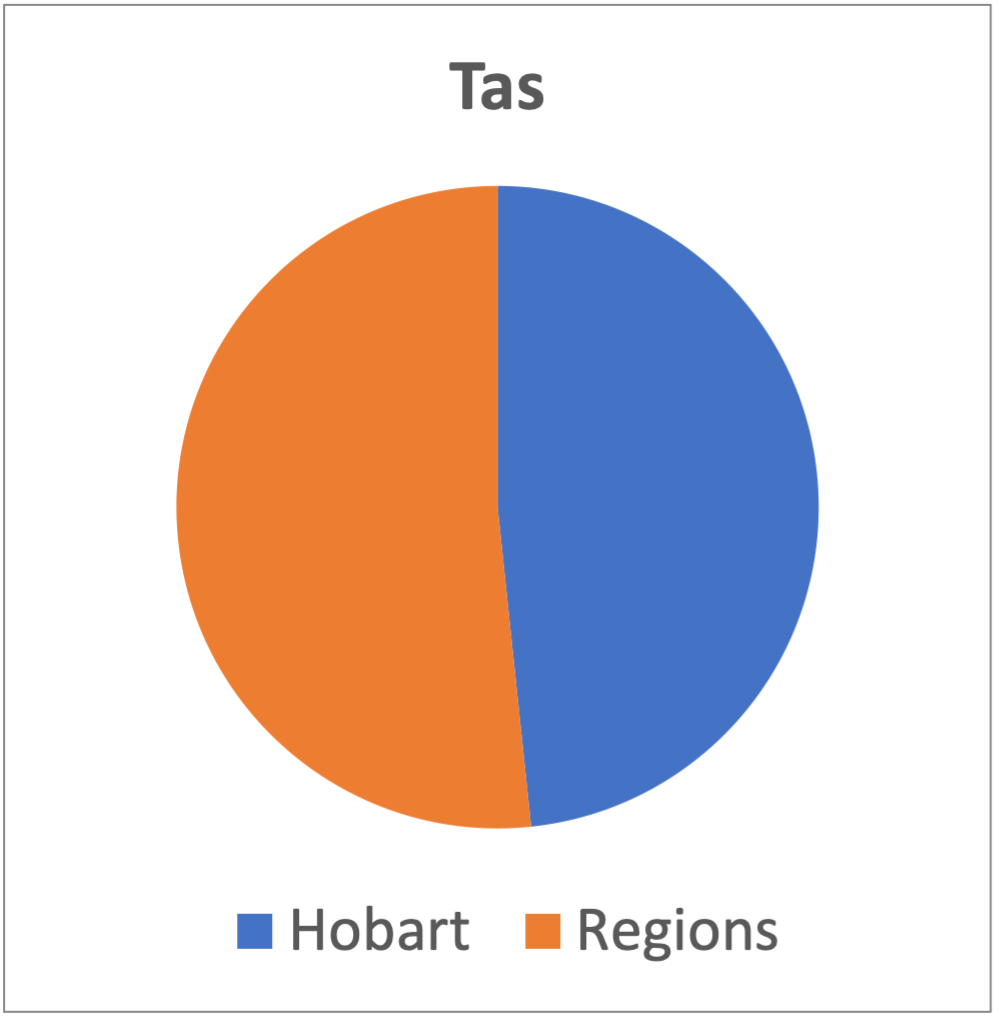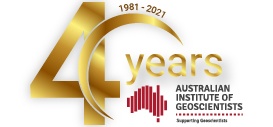Speaker: Dr Nick Direen
Date: 29 July 2021
Time: 6.00pm presentation (AEST)
Venue: Zoom Webinar
Presented by AIG Tasmania Branch
Register in advance for this meeting: Click Here
After registering, you will receive a confirmation email containing information about joining the meeting.

Nick is currently researching the geophysical aspects of the Carboniferous scheelite (WO3) skarn mineralisation, which has been made possible by the recent dewatering of the Dolphin-Grassy Open Cut, and new drilling by King Island Scheelite Pty Ltd. This work will be touched on during this talk.
The Speaker: Nick is one of Australia’s most versatile applied geoscientists. He is currently an Associate Researcher at CODES, applying geophysics and geology to a range of problems in the minerals and energy industries, as well as to understanding plate tectonic phenomena.
Nick has worked in the Government- (AGSO/GA), Academic (U Adelaide, U Tas), Consulting (FrOGTech) and Industry (ExxonMobil/Esso Australia) sectors in a diverse career since 1999.
Nick’s interest in King Island began in 1997, during his PhD, when he mapped the SE coast of the Island to understand the age and association of the pile of unusual mafic volcanic rocks in the context of the Rodinia supercontinent breakup. He has since published 8 scientific papers on various aspects of the geology of King Island, including its place in the Neoproterozoic Snowball Earth, and has led multiple geology field trips there. A GSA-SGTSG fieldtrip is planned for Feb 2022.
Nick is an AIG Fellow, and a member of SEconG, SEG, GSA, AGU, AAPG, SEAPEX and ASEG.
Help to make a difference – please contribute now
The latest quarterly survey of geoscientist employment in Australia is open for contributions. AIG members are asked to complete the survey by following this link and encouraging friends and colleagues to also contribute. You do not need to be an AIG member to participate in the survey which is open to all geoscientists currently working, or seeking work in Australia.
This series of surveys has been demonstrated to provide a useful and responsive barometer of the state of the mineral and energy resource industries across Australia. We need as many geoscientists, both AIG members and non-members, to contribute to enhancing the reliability of the survey results.
This installment in this long-running survey series is designed to examine whether recent improvements in employment conditions for geoscientists throughout Australia have continued. Geoscientist unemployment fell to just 4.5% nationally in the final quarter of 2020, but increased, contrary to anecdotal evidence, in the first quarter of 2021.

Geoscientist unemployment in Australia in the first quarter of 2021 was 5.8%, up from 4.5% in the fourth quarter of 2020. Underemployment increased slightly from 9.3% at the end of 2020 to 9.7% in the first quarter of 2021. The increase in unemployment in the first quarter of any year is generally considered to reflect decreased exploration activity due to the Christmas-New Year holidays and the northern Australia wet season. In this survey, however, the proportion of responses from self-employed geoscientists, or geoscientists in part-time and casual employment also fell. These employment sectors are usually most affected by seasonal conditions. State government responses to COVID-19 infections and continues to affect business confidence and planning in Australia.
The survey takes only two or three minutes to complete. No data that could personally identify respondents is collected.
Contributions to the survey are sought from both employed and unemployed geoscientists to ensure the relevance of results.
Your completing the survey really helps to make a difference to the standing and knowledge of our profession.
The survey will be open for contributions until Saturday, 31st July 2021. Every contribution adds to the reliability of the survey results. Sincere thanks in advance for your support of this survey series. Again, follow this link to complete the survey.

Ideas that Must Parts 2 and 3, Episodes 40 and 41
Ideas That Must (Part 2) : LISTEN NOW
Ideas That Must (Part 3) : LISTEN NOW
At the end of all of our interviews, Steve and I always ask our guests two questions: what is something they think that needs to live and what is something that needs to die in the mining industry? We thought it would be interesting to put together some of the responses we have received to those questions over the years. So on this episode of Ideas That Must, we are joined by, in order, Mark Bennett, Attila Pentek, Richard Scott, Holly Bridgwater, Mark Bennett (again), Marcus Lake, Michelle Carey, Holly Bridgwater (again), Justin Strharsky and Samantha Copeland. Let’s find out what they had to say.
If you would like to listen to the full episodes, click on the links below:
Mark Bennett
Attila Pentek
Richard Scott
Holly Bridgwater
Marcus Lake and Michelle Carey
Justin Strharsky
Samantha Copeland

A summary of the results of the 2021 JORC Code stakeholder consultation survey has been released.
The results include an outline of the demographics of respondents as well as the major areas of concern around the content and application of the Code revealed by the survey. The report can be obtained here;
http://www.jorc.org/docs/jorc-summary-paper-of-key-issues-and-work-plan.pdf
Additionally, there is a call for Expressions of Interest from suitably experienced professionals to participate in a number of specific issue Working Groups to progress the development of the Code revision. Nine topic areas have been outlined and nominations from interested persons are invited with a closure date for submissions via the online ‘Expressions of Interest’ form by 21st July 2021.
http://www.jorc.org/code-update.asp
AIG encourages members to actively participate in this process.
Ideas that Must (Part 1)

At the end of all of our interviews, Steve and I always ask our guests two questions: what is something they think that needs to live and what is something that needs to die in the mining industry? We thought it would be interesting to put together some of these responses we have received to those questions over the years. So on this episode of Ideas That Must, we are joined by, in order, Jon Goodman, Attila Pentek, Jon Hronsky, Tony Manini, Hedley Widdup and Mary Poulton. Lets find out what they had to say.
If you would like to listen to the full episodes, click on the links below:
Jon Goodman
Attila Pentek
Jon Hronsky
Tony Manini
Hedley Widdup
Mary Poulton
Until next time, lets keep exploring.

The Lost Cities of Gold with Keith Barron

Ever since I watched the first Indiana Jones movies as a kid, I always wanted to be a real life version of Indy. The hat, the whip, the character that was so wonderfully embodied by Harrison Ford. Everything about that I just loved. That fascination of being a treasure hunter has always stayed with me. I don’t think that is something unique to me though. I would like to think we all have within ourselves a desire to be a treasure hunter. To chase and find a bit of history like Indy did on the screen.
In 1998, Keith Barron went to Ecuador to participate in a Spanish language school for a month. On this trip, he met a local historian, Professor Octavio Latorre. That chance meeting started a decades long search for 2 gold mines run by the Conquistadors in the 1500s deep in the Ecuadorian jungle.
Keith is often referred to as the Indiana Jones of Mining. He does not have the hat or the whip, but his search for the Lost Cities of Gold could easily be lifted from a plot line from one of the movies. On face value that’s what it seems like – a crazy treasure hunt in the jungles of South America. But there is much more to this story than just a movie plot line.
Keith Barron is Chairman and CEO of Aurania Resources. Come join us and let’s explore.

Employment by Region and Occupation — NERO — is a new experimental dataset developed by the National Skills Commission, a Commonwealth government agency.
NERO provides timely information on employment at detailed levels, including 355 occupations across 88 regions in Australia. Until now, data at this level of detail was only readily available once every five years as part of the ABS Census of Population and Housing. With NERO, the insights are available monthly.
As a new source of labour market intelligence, NERO will provide unique and detailed data on employment trends across occupations and regions – in excess of 30,000 series in total.
These data will provide more timely assessments of how regional labour markets are evolving and occupational trends within regional labour markets.
NERO uses an emerging methodology called ‘nowcasting’, which applies both traditional and real-time data, as well as big data techniques, such as machine learning, to estimate current trends. Nowcasting is different to forecasting in that it doesn’t attempt to predict or anticipate the future—its focus is on understanding the now.
NERO can be searched either by occupation or by region with the data available for download in a variety of ways.
This first release of NERO includes data from September 2015 to April 2021. Updates for May through to August 2021 are scheduled to be released on 1 September 2021, with subsequent updates to occur on the first Wednesday of each month. At this stage, the NERO estimates are experimental in nature. The NSC welcomes feedback on how the estimates could be improved by emailing: nowcasting@skillscommission.gov.au.
NERO provides the following data for geologists, geophysicists and hydrogeologists as of February 2021.
The results are both interesting and relevant to the ongoing refinement of AIG’s purpose and strategy. That there are 7426 geoscientists (geologists, geophysicists and hydrogeologists as defined in the NERO data) comes as no surprise. A working assumption that there were between 6,000 and 8,000 geoscientists in Australia has long been used as a working assumption by professional institutes and learned societies servicing this cohort in Australia, based on past Australian census data. There is a discrepancy in the NERO data that a total of 7112 geoscientists in Australia is reported when data for the individual regions represented (less than 5% discrepancy) in NERO are reported, but that’s arguably not a significant issue in the scheme of things. The data is still better than any analysts have had access to previously.
The breakdown of geoscientists by state provided by NERO is vastly different to that of AIG’s membership base. About half of AIG’s Australian members are in Western Australia (about 42%) and the remainder is spread across the remaining states. Western Australian geoscientists represent just under 30% of the NERO data.
Across Australia, one-third of Australia’s geoscientists are employed in regional areas of Australia. A significant proportion of Australia’s geoscience professionals remains employed in regional areas, despite the rise of fly in – fly out work in exploration and mining.
 |  |
This proportion varies markedly between states, generally reflecting the population distribution in that state. Geoscientist employment is capital city focussed in South Australia, Victoria and Western Australia, and most decentralised in Queensland and Tasmania.
 |  |  |
 |  |  |
 |
What does this mean for AIG’s members?
These results demonstrate that geoscientist employment is likely to be considerably more diverse than suggested by AIG’s membership, which is concentrated in mineral and energy resource exploration, mining and production. The same may be said of AusIMM’s geoscientist membership. This creates a situation where a large cohort of geoscientists are not members of any professional body, requiring adherence to a Code of Ethics or any requirement for continued professional development. These are key elements of any community’s perception of what defines a professional. This has potential to affect the perception of the geoscience profession that would be exposed by an event or incident in which the conduct of a geoscientist was publicly questioned.
The information also provides a basis for assessing the need to service members in regional areas, particularly in States where geoscientist employment is most geographically diverse.
Having access to this information is beneficial to the AIG board in setting the Institute’s short-term priorities and long-term strategy.
In conjunction with the Mentoring Programs and of particular interest to early career geoscientists but open to all AIG members we are running three workshops in the Your Brand series entitled “Pathways to Your Dream Job“.
For each of these sessions, participants will be able to log into the webinar to;
By completing the three part series and applying what they have learned, the participants will be “market-ready” and set to launch their career.
Wed 28 July 2021, 12pm AEST
Join Patrick McAndless, P.Geo., FGC for an insightful webinar/workshop where participants will uncover their unique way of making a difference to create a personal Brand Statement. The Brand Statement represents your life purpose and internal compass for your entire career journey – vital knowledge for any early career geoscientist (approx 0.5 to 1 hour).
To join the webinar – login at: https://aig.us1.list-manage.com/track/click?u=92efbee80c7d44c11ec329f02&id=7a84f507fc&e=6fcaa1014eOr One tap mobile : Australia: +61731853730, 83069442953#, *934349# or +61861193900, 83069442953#, *934349#
Dial(for higher quality, dial a number based on your current location):
Australia: +61 7 3185 3730 or +61 8 6119 3900 or +61 8 7150 1149 or +61 2 8015 6011 or +61 3 7018 2005
Webinar ID: 830 6944 2953
Passcode: 934349
International numbers available: https://us02web.zoom.us/u/kb1O0Nuqbv
Wed 4 August 2021, 12pm AEST
Patrick McAndless, P.Geo., FGC presents a second webinar/workshop where participants will learn how to market themselves by applying their newly created Brand Statement to a variety of Brand Products including their resume, Linkedin profile and business card. (approx ½-¾ hour).
To join the webinar/workshop – login atOr One tap mobile : Australia: +61871501149, 84728452521#, *226012# or +61280156011, 84728452521#, *226012#
Or Telephone :
Dial(for higher quality, dial a number based on your current location) : Australia: +61 8 7150 1149 or +61 2 8015 6011 or +61 3 7018 2005 or +61 7 3185 3730 or +61 8 6119 3900
Webinar ID: 847 2845 2521
Passcode: 226012
International numbers available: https://us02web.zoom.us/u/kc6pvFXLpl
Wed 11 August 2021, 12pm AEST
Patrick McAndless, P.Geo., FGC presents the third and final webinar/workshop where participants will learn to effectively market themselves with confidence in all networking situations and job interviews. (approx ½-¾ hour).
To join the webinar/workshop – login atOr One tap mobile: Australia: +61370182005, 88669288389#, *517608# or +61731853730, 88669288389#, *517608#
Or Telephone:
Dial(for higher quality, dial a number based on your current location): Australia: +61 3 7018 2005 or +61 7 3185 3730 or +61 8 6119 3900 or +61 8 7150 1149 or +61 2 8015 6011
Webinar ID: 886 6928 8389
Passcode: 517608
International numbers available: https://us02web.zoom.us/u/kHS7EXL6M


AEGC 2021 is now only 10 weeks away and we can’t wait to see as many of you as possible there in person.
We know that not all of you will be able to join us in Brisbane this year so we are committed to offering flexibility in attending the Conference. For those of you that are unable to physically join us, we are excited to be able to offer a fully accessible Conference for all across the globe via our state-of-the-art virtual platform.
Our platform is feature rich with enhanced networking capabilities, including text and video chat. Don’t miss your chance to re-connect with colleagues around the world.
Watch content on-demand when it fits into your schedule, learn at your own pace and from the comfort of your own space.








July – August 2021
AIG’s informative, popular and affordable JORC Code training program is again being presented through a series of webinars during July and August. (commencing 28th July). The seminars are run at times to suit attendees anywhere in the world. The webinar content is continuously updated to ensure that training benefits from attendee feedback and developments in the application of the code in public reporting of exploration results, mineral resources and ore reserves, and caters both for professionals responsible for preparing announcements and using the content that they present.
The course is designed to be flexible. The five, two hour modules may be completed as a single unit or individually according to the needs of course participants.
